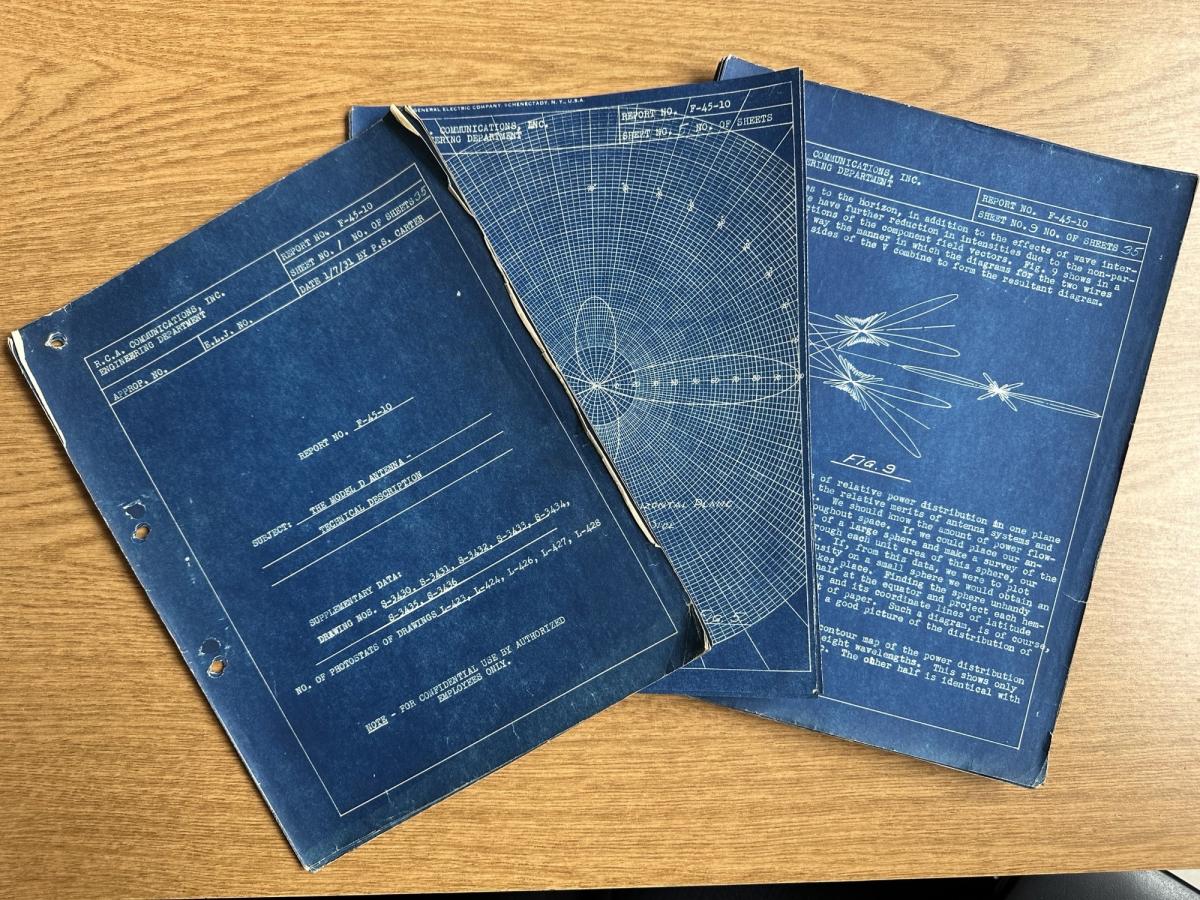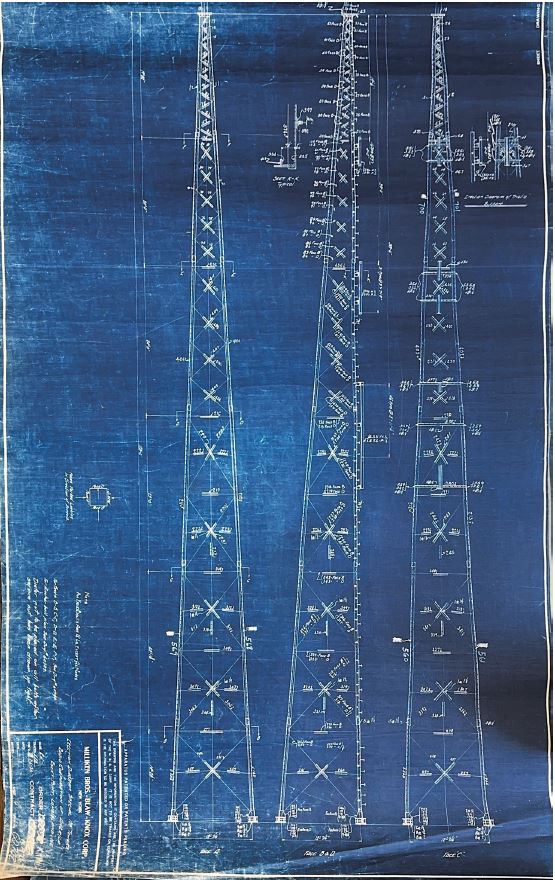The Radio Corporation of America (RCA) is a well-known American company that is often associated with audio equipment and RCA Victor in Camden, New Jersey. The RCA Rocky Point Station, located on Long Island in Rocky Point, NY was RCA’s Radio Central. It was the largest radio station in the world at one point in time and its primary focus was intercontinental communications. Additionally, it was also home to important developments in radio engineering and communication due to ongoing experiments and innovation.
When working with records related to engineering, one is sure to encounter some form of an engineering report. Engineering reports are technical documents that address a specific problem, analyze it, and then provide a solution. While processing the RCA Rocky Point Station records, I found a significant amount of engineering reports, many of which are blueprinted.

Another type of report found within the Rocky Point Station records is a specification. Specifications are written to include the information and instructions which cannot readily be embodied in drawings and other forms which can easily be reproduced. In general, instructions covering the manufacture of equipment, performance requirements, acceptance tests, installation instructions, technical description of theory and functioning, operating instructions, adjustment instructions, and maintenance instructions are compiled in the form of specifications.

Initially, the plan for the Rocky Point Station was that it would focus on long wave communication utilizing lots of Alexanderson alternators connected to large antennas and arranged in a network with steel towers in a wheel spoke configuration. However, shortly after construction began it was discovered that short wave communication was just as effective for intercontinental communication and so the original plan was scrapped. The antennas that were built remained in use. Eventually, in the 1960s, communication satellites would become the preferred method for communication. By the end of the 1970s, Rocky Point Station was no longer lucrative, and RCA sold the property to New York State in 1978 for almost nothing.
The RCA Rocky Point Station records will be available to researchers in January 2024.
Alexis Jimenez is the Processing Archivist at Hagley Museum and Library
